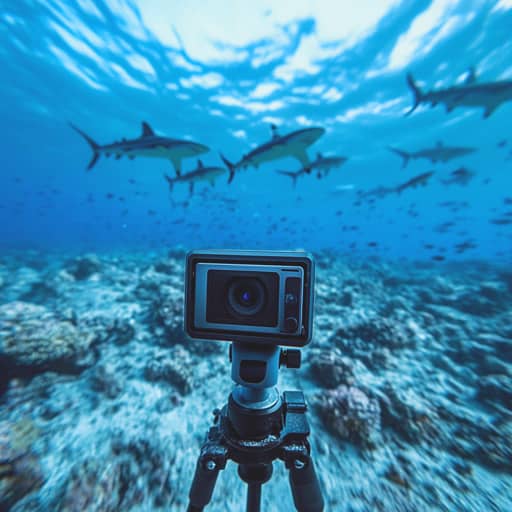In the dynamic world of digital content creation, there are much opinions and debates around photography or videography. However, it seems like the content creation industry still lacks a dedicated space where 360 video creators can showcase their works.
As virtual reality headsets have become more affordable, thus there may yet be an untapped opportunity to capitalize on 360 video production. Before we dive into the entrepreneurial opportunities though, should we explore what are the advantages of shooting 360 videos?
Let’s begin by doing some comparison between shooting videos with a 360 camera versus conventional digital cameras.
Advantages of 360 Video
Immersive Experience
A major advantage of 360 video is its immersive nature, a feature that traditional videos cannot match. However, this means that this type of video is only suited for certain types of content. For example, virtual reality (VR) contents typically make use of 360 videos to create a more engaging viewing experience. If you are developing a VR app, a 360 video could significantly reduce cost and production time.
Unique Perspective in 360 video
360 videos captures every angle of a scene simultaneously. This allows for more dynamic storytelling, as viewers can focus on different scenes of the environment. The video producer must bear in mind though that this means he cannot control where the viewer focus his attention.
Engagement and Interactivity
360 videos are inherently more engaging. Wearing a VR headset, your viewers just need to turn their heads to view a different perspective of the scene. In the online space where your viewers are known to only be willing to spare seconds for a video, 360 videos can captivate your audience for a longer period of time. Hence, this presents many opportunities for audience engagement.
Versatility in Content Creation
360 videos can be applied to a wide range of genres e.g. travel, events, sports, etc. This versatility opens up new creative possibilities for content creators. You may indeed use 360 videos to to attract diverse audiences or draw in new types of customers. This would certainly inject a breath of fresh life into the content creation industry.
Enhanced Storytelling with 360 video
With 360 videos, storytellers can create more complex narratives by placing viewers directly inside the environment. For example, this can be a particularly powerful medium for documentaries, virtual tours or exciting virtual escapades. In addition, role playing through immersive 360 videos also holds the potential to create an entirely new genre of videos.
Tech Tip: Book your own website domain name.
It is not wise to rely just on social media platforms to promote your business or whatever venture or cause you are advocating. This is because your page can be taken down or even permanently banned anytime as regulations around how we use the Web become more strict.
Click on the image or use my affiliate link to book and secure your own website’s domain name now. I may earn a commission if you make an online purchase at Namecheap’s website.
Let’s take a short break with a 360 virtual tour of Grand Canyon.

360 Video Production: Beginners Guide For Content Creators
Seamless Capture With 360 Cameras
If you are a beginner, you will be glad to know that there are many 360 cameras that are designed for hobbyists. In fact, anyone who had shot videos with camcorders, DLSR or mirrorless cameras before, should find standard 360 cameras a breeze to use.
With 360 cameras, you do not have to worry a lot about angles as pretty much everything is captured! Depending on your project’s aims, this save time as it eliminates the need to meticulously frame each shot. Thus, 360 video is perfect for capturing spontaneous moments that you do not want to miss.
There is a key difference between 360 videos and 2D videos recorded with conventional digital cameras. As 360 videos are captured with two different lenses, the footage needs to be “stitched” together in order to form a seamless spherical format, commonly known as equirectangular.
Just bear in mind that stitch lines problems may appear if the object is too close to the camera. Complex background or patterns may also make it difficult for the stitching algorithm to correctly detect where to join the footage. Try to avoid these pitfalls during shooting as footage that cannot be properly stitched together may look distorted.
For moving scenes, you should consider mounting your 360 camera on a monopod for better stability. Take time to practice and experiment with different angles before you go for the actual shoot. Indeed, there are new skills to learn about shooting 360 videos even if you are an experienced videographer.
Here’re some ideas by Jordi Koalitic on how you can shoot some amazing footage with the INSTA360 X3 camera!

Content Creators Always Upskill Themselves
With Alison’s free education, you can easily enrol in content creation online courses complete with graded assessments. You only pay if you need the certificate and I may get a commission as an affiliate.

360 Video Production: Beginners Guide For Content Creators
Playing, Editing and Uploading 360 Video
You should note that spherical video formats cannot be played directly in conventional media players like Windows Media Player. This simply means you may need to download a specialized software or plugin to play 360 videos.
You will be pleased to know that editing 360 videos have become more streamlined over the years. Numerous modern software have made the editing and exporting processes more efficient and the learning curve is relatively gentle. If you have done some video editing before, getting accustomed to editing 360 videos should not be too difficult.
In recent years, popular video sharing websites such as YouTube have made it easier to upload 360 videos. Before uploading the video, you must ensure your video has 360°/VR metadata encoded into the video. This encoding will likely automatically happen if you use the editing software that came with your 360° camera. However, if you are using an editing app such as Premiere Pro, you must turn on the setting “Video is VR” when you are in the Export menu. If you really need to manually encode the metadata, then refer to YouTube Help – Upload 180- or 360-degree videos.
Tech Tip: Protect your online privacy.
Online data privacy is such a hot tech topic these days. Start protecting your online privacy by using a reliable virtual private network (VPN) service.
I’d recommend using Namecheap’s FastVPN because it is easy to install and has a strict no logs policy.
Click or tap on the images or use my affiliate link to get your VPN offer and I may earn a commission if you make an online purchase at Namecheap’s website.
Before we finish off, let’s watch some of Internet’s most mind blowing 360-degree videos.
Conclusion
Choosing to shoot a video with a 360 camera or a conventional digital camera ultimately depends on the type of content you want to create. While conventional cameras offer unparalleled detail and control, 360 cameras excel in providing immersive experiences.
360 videos offers an exciting and innovative way to engage audiences that is just not possible with conventional videos viewed on a flat screen. You might be surprised to find out yourself how a 360 video can open up endless possibilities for content creation.
Judging by the endless stream of tutorial videos and articles out there about 360 video production, it would look like the demand for immersive media will continue to grow. Therefore, do you not think this is an opportune time to explore this technology and harness its potential?
Perhaps you might even want to consider mastering the tools and techniques and build a successful career around professional 360 video production.





